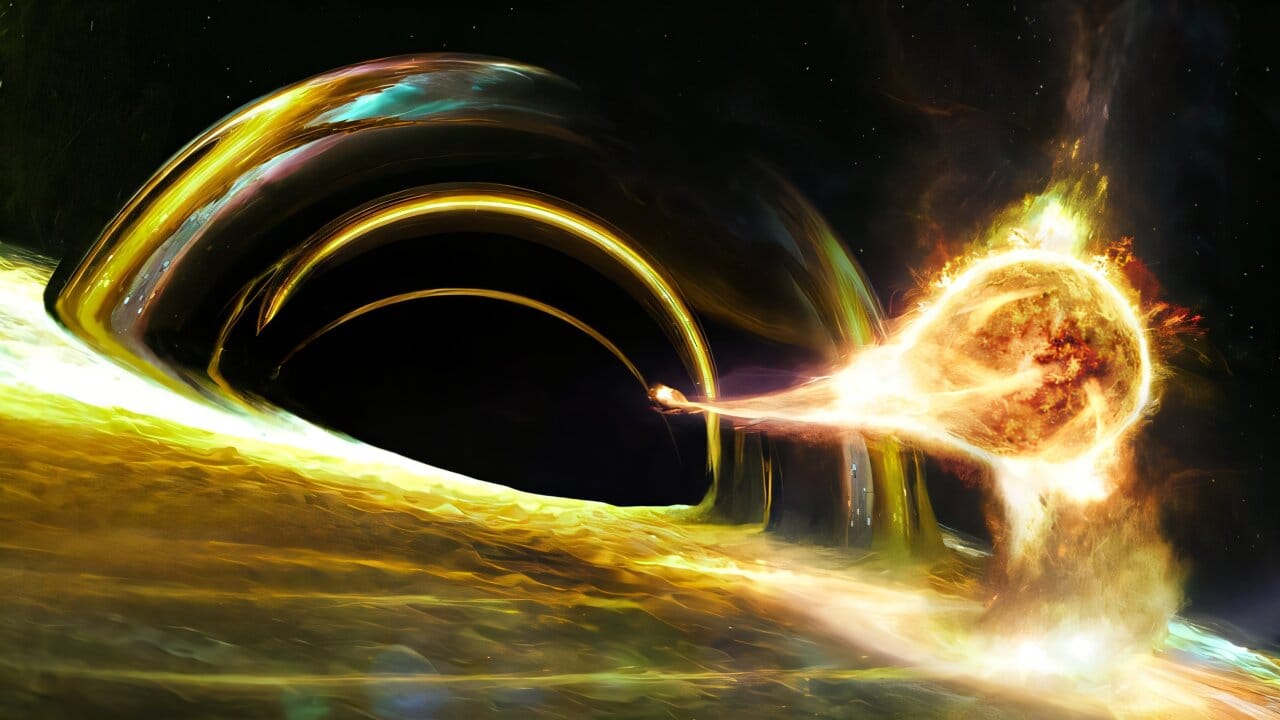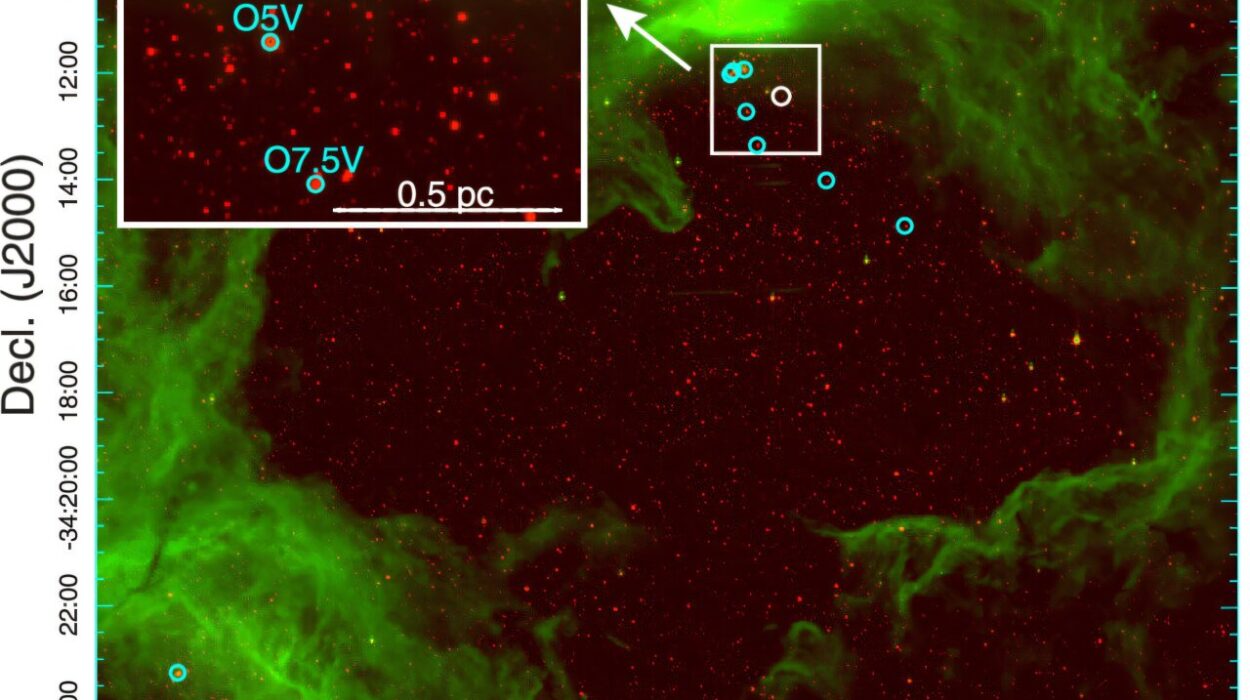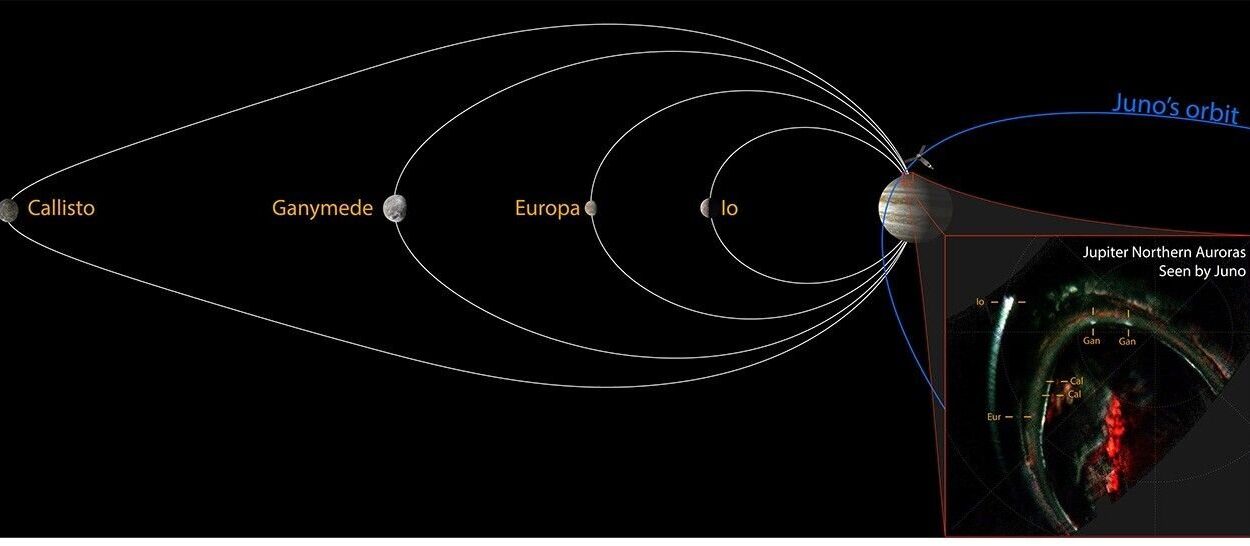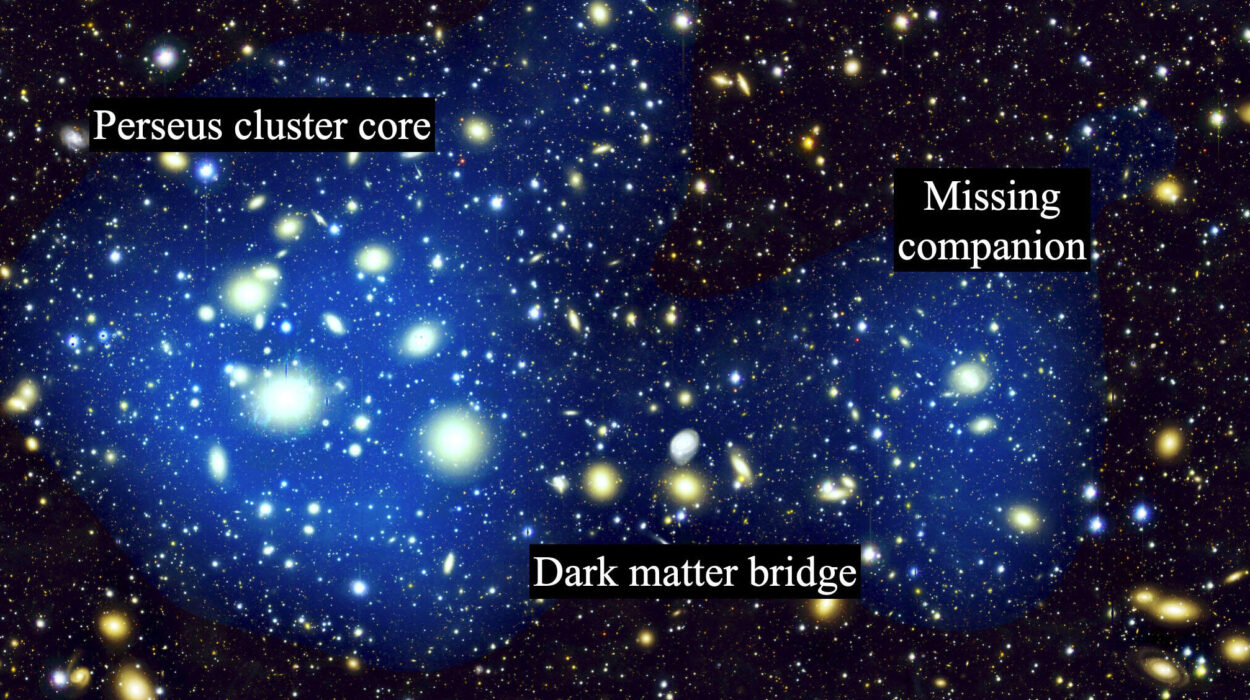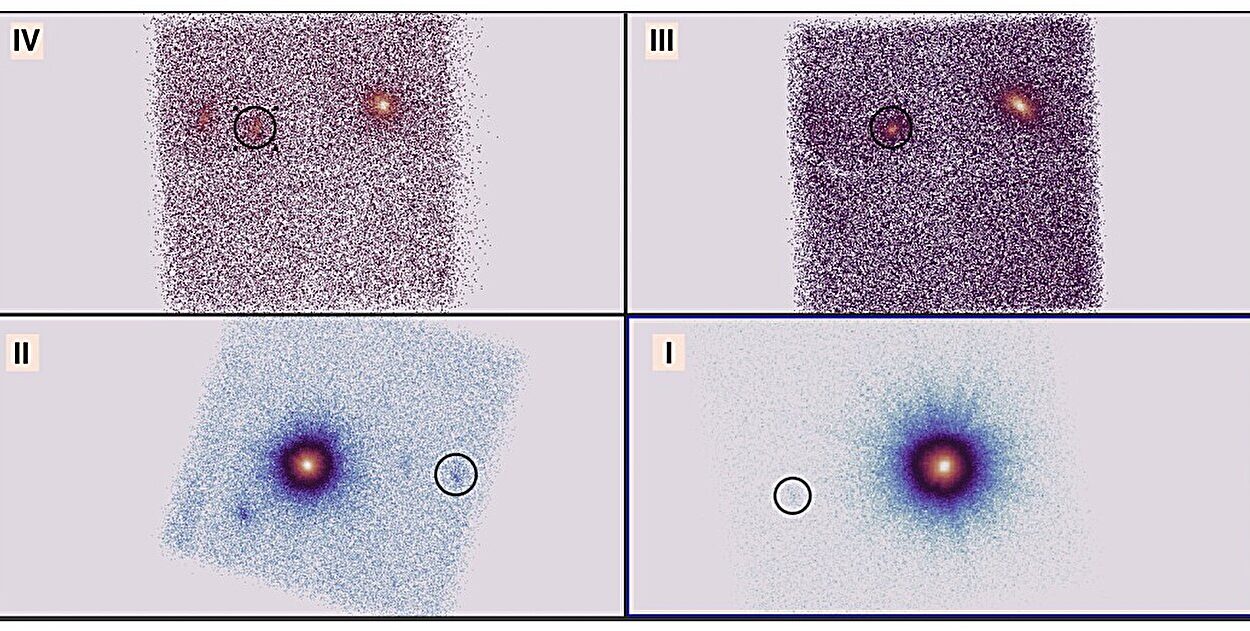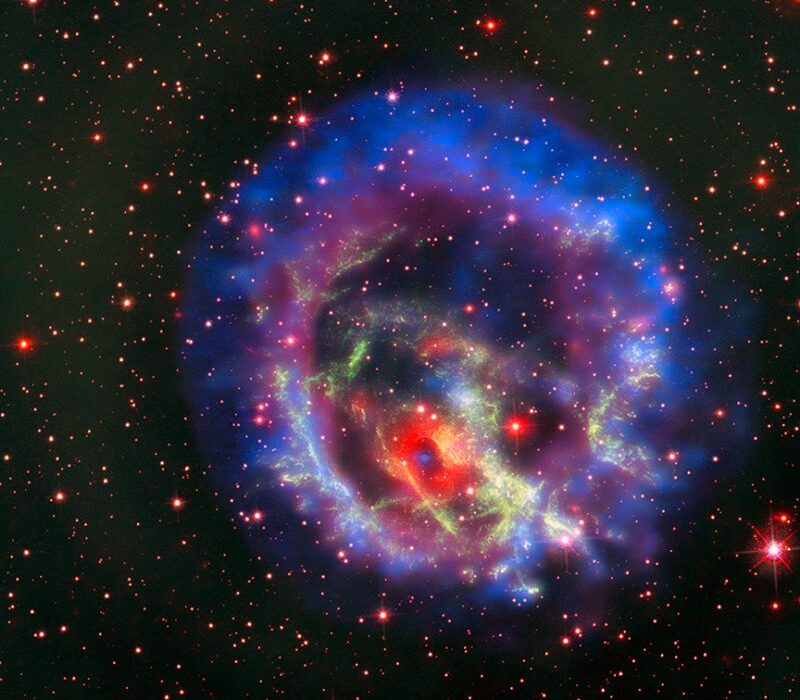For decades, astronomers have known that black holes are the universe’s most unforgiving predators. They lurk silently at the centers of galaxies, invisible yet all-consuming, waiting for anything foolish enough to drift too close. In this cosmic game of proximity, stars are often the most tragic victims—pulled apart and devoured in what astronomers call tidal disruption events, or TDEs.
These events are rare, violent, and final. Or so we thought.
In a twist worthy of a science fiction novel, a star in a distant galaxy seems to have survived its close encounter with a supermassive black hole—not once, but possibly twice. And it may not be finished yet.
A team of astronomers led by Dr. Lydia Makrygianni, a researcher at Lancaster University and formerly a postdoctoral fellow at Tel Aviv University, has reported an astonishing observation: a second flare, identical in brightness, timing, and signature to one seen two years earlier, coming from the same location. This is the first known case of a star being only partially disrupted by a supermassive black hole, living to shine—and suffer—another day.
Their findings, published in The Astrophysical Journal Letters, don’t just challenge what we thought we knew about black holes. They may require a complete rethinking of one of the most dramatic types of events in the cosmos.
A Star’s Brush with Death
Black holes are not just dense objects. They are warps in space and time, places where gravity becomes so intense that light itself cannot escape. The black hole at the center of our Milky Way, Sagittarius A*, holds more than four million times the mass of our Sun, packed into a volume no larger than the solar system. And that’s on the small side—some supermassive black holes are billions of times more massive.
These behemoths are often quiet. But occasionally, a star wanders too close. The gravity gradient—the difference in gravitational force between the part of the star closest to the black hole and the part furthest away—becomes so extreme that the star is pulled apart in a cosmic display of destruction.
As the shredded gas and plasma spiral inward, they heat up to extreme temperatures and emit intense radiation. For a few weeks or months, the feeding frenzy lights up the darkness, allowing astronomers to study the otherwise invisible monster.
Yet despite the power of these events, they’ve often been underwhelming. For more than a decade, scientists have puzzled over why TDEs appear fainter and cooler than expected. The new observation, a flare known as AT 2022dbl, may have finally provided a clue—and it came in the form of a repeat performance.
Lightning Strikes Twice—In Space
In 2020, astronomers detected a flare from a distant galaxy that fit all the hallmarks of a TDE. It glowed brightly, faded gradually, and carried the chemical signatures of stellar material being devoured. Case closed—another star lost to a black hole.
But then, in 2022, telescopes picked up another flare from the exact same location in the sky. At first, the team thought it might be a fluke, or a rare case of an active galactic nucleus flaring up. But when they examined the data, the truth was stranger—and far more exciting.
The two flares were nearly identical in brightness and shape. The timing suggested that the star—whatever was left of it—had made another pass around the black hole, getting too close once again, and triggering a second tidal event.
This “repeat TDE” is a first for astronomy. It implies that the star wasn’t fully destroyed during its initial encounter. Instead, it was only partially stripped of its mass. The rest of it survived, continuing on a distorted orbit, doomed to return.
A New Model of Stellar Disruption
Until now, the assumption has been that when a star gets caught in a black hole’s tidal forces, it’s a one-way trip. But AT 2022dbl suggests a new class of interactions—a slow-motion death where a star is gradually unwrapped, one pass at a time.
Professor Iair Arcavi, a senior researcher at Tel Aviv University and Director of the Wise Observatory, has been leading efforts to understand what this means for our models of black hole feeding. He explains that this “snacking” behavior may be far more common than astronomers realized.
If the star returns again, perhaps in 2026 as predicted, it would confirm that even the second flare was only a partial disruption. That would mean these types of events—long assumed to be terminal—might often be multi-pass affairs, where stars are slowly consumed over years or decades.
But if no third flare appears, then perhaps the second encounter was the final one, and the star was ultimately destroyed. In that case, astronomers must reckon with a more subtle lesson: that full and partial TDEs look almost exactly the same, making it difficult to distinguish between them without repeated observation over years.
Either possibility would force a fundamental reevaluation of how black holes interact with the stars around them.
A Glimpse into the Galactic Heart
The implications of this discovery ripple outward in more than one direction. At a basic level, it helps explain why past TDEs have often seemed “too dim” or “too cold.” If what astronomers were witnessing were not full stellar disruptions but only partial ones, then their energy signatures would naturally be lower. What once appeared to be a puzzle may simply have been a misidentification—a mistaking of the overture for the climax.
More broadly, repeat TDEs offer a unique window into the environment around supermassive black holes. They allow researchers to observe not just the one-time fireworks of a stellar death, but the orbital evolution of a star in real time. This provides insight into how stars move through galactic centers, how often they fall victim to black holes, and how much mass black holes accumulate over time.
Given that every large galaxy—including our own—houses a central black hole, understanding these interactions is essential to understanding galactic evolution itself.
The Coming Countdown
Now, all eyes are on 2026. If a third flare emerges from the same galactic coordinates, it will not just confirm a new kind of celestial rhythm. It will also open the door to predictive black hole astronomy—something previously thought impossible.
Such a discovery would be more than just a scientific triumph. It would be a shift in how we think about time, death, and recurrence in the universe. Black holes, once thought to be final destinations, may turn out to be recurring threats, eating stars not in a single gulp, but in slow, gravitational nibbles.
It’s a bit like watching a dancer step toward the edge of a cliff again and again, pulled by an unseen force—each time losing something, but never quite falling. Until, finally, there is no more to lose.
Rewriting the Rulebook of Cosmic Catastrophes
For decades, black holes were considered the ultimate endpoints of matter and light—enigmatic one-way doors in the fabric of space. We now know they are far more dynamic, unpredictable, and complex. The story of AT 2022dbl is just the latest reminder that the universe is not only stranger than we imagine—it’s stranger than we can imagine.
Yet thanks to scientists like Dr. Makrygianni, Prof. Arcavi, Prof. Ehud Nakar, and countless international collaborators, we’re starting to catch up.
With each flare, each anomaly, and each unexpected recurrence, we learn more about the invisible beasts that sculpt the galaxies. And sometimes, as in this case, the universe even gives us a second chance to look again.
Whether AT 2022dbl was the end of the story or just the second chapter, one thing is clear: we are witnessing a phenomenon never seen before. And somewhere out there, a battered star might still be circling the darkness, counting down the days until it lights up the sky once more.
Reference: Lydia Makrygianni et al, The Double Tidal Disruption Event AT 2022dbl Implies that at Least Some “Standard” Optical Tidal Disruption Events Are Partial Disruptions, The Astrophysical Journal Letters (2025). DOI: 10.3847/2041-8213/ade155
